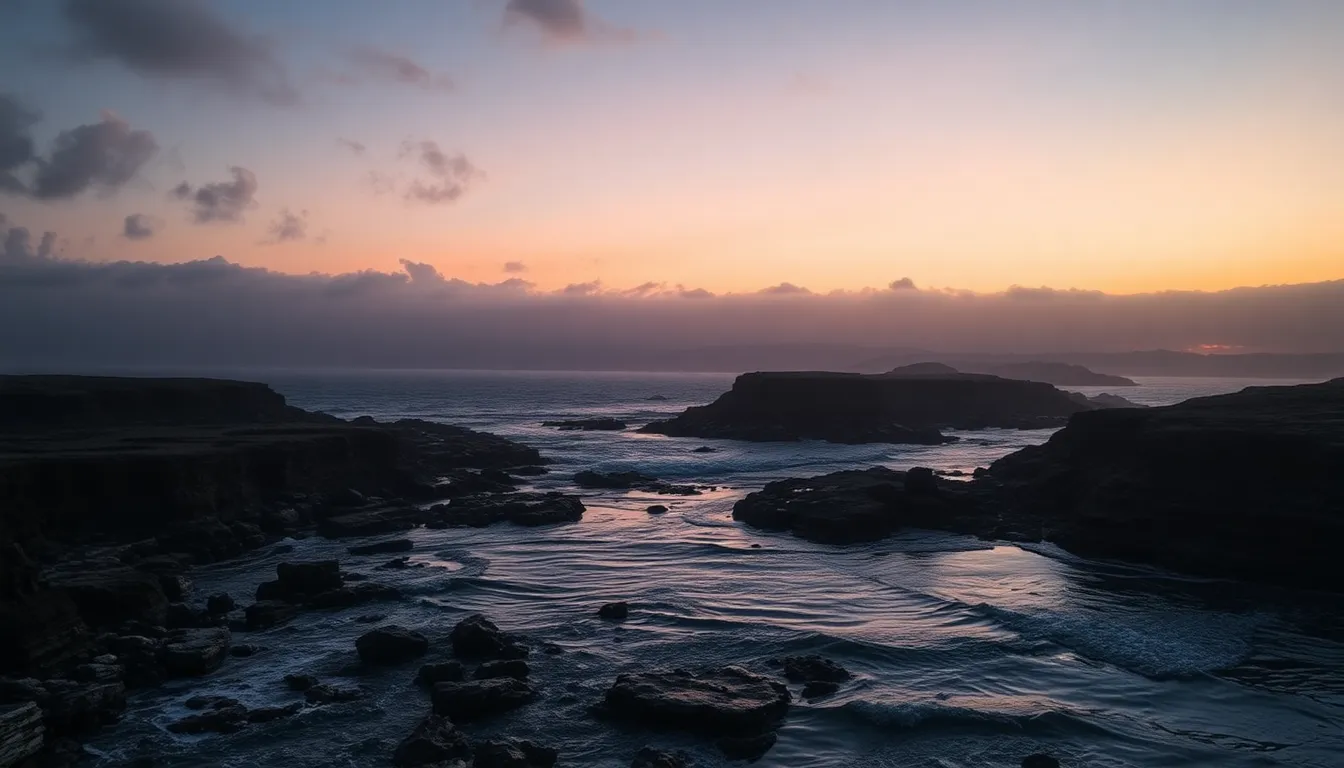The Sacred Shores: Coastal Myths and Their Places
I. Introduction
Coastal myths, the rich tapestry of stories woven around the world’s shorelines, play a vital role in many cultures. These narratives often reflect the values, fears, and aspirations of the communities that live by the sea. Myths serve as a bridge between the tangible world and the realm of the supernatural, providing insight into human experiences with the unpredictable nature of coastal environments.
The relationship between coastal environments and myth-making is profound; the ocean’s vastness, the rhythmic tides, and the ever-changing weather patterns offer not only a backdrop for storytelling but also fundamental elements that shape these narratives. This article aims to explore the multifaceted nature of coastal myths, delving into their origins, cultural significance, and contemporary relevance.
II. The Role of Geography in Coastal Myths
Geography plays a crucial role in shaping the myths associated with coastal areas. The unique landscapes, from rocky cliffs to sandy beaches, inspire local legends that often reflect the characteristics of the land and sea.
- Specific Coastal Landscapes: The dramatic cliffs of the Irish coast have given rise to tales of banshees and fairies, while the serene beaches of Hawaii are filled with stories of the goddess Pele.
- Natural Phenomena: Storms, tides, and waves often become central characters in coastal myths. For example, the powerful storms of the Caribbean have resulted in legends of fearsome sea spirits.
Notable case studies include:
- The Great Lakes: Indigenous myths surrounding the water spirits and the sacredness of these massive freshwater bodies.
- The Mediterranean Coast: Myths of sirens and their enchanting songs that lure sailors to their doom.
III. Indigenous Coastal Myths: Voices of the Ancients
Indigenous cultures have long connected their narratives to coastal regions, viewing the ocean not just as a resource but as a living entity filled with spirits. These stories often highlight the relationship between people and the natural world.
- Key Figures: Many Indigenous myths feature sea gods and spirits, such as the Hawaiian deity Kanaloa, who embodies the ocean’s power and mystery.
- Oral Tradition: The preservation of these stories through oral tradition has been essential. Elders pass down tales that teach younger generations about respect for nature and the interconnectedness of life.
IV. European Coastal Myths: From Mermaids to Sea Monsters
The rich folklore of Europe is replete with coastal myths, including enchanting tales of mermaids and fearsome sea monsters. These stories often stem from maritime cultures that sought to explain the unknown.
- Popular Myths: The legend of the Loch Ness Monster and tales of mermaids in Scandinavian waters reflect the deep-seated fears and fascinations of coastal inhabitants.
- Symbolism: Mermaids often symbolize the duality of beauty and danger, representing both the allure of the sea and its treachery.
The influence of these myths extends beyond oral traditions into literature and art, inspiring countless works from Shakespeare’s The Tempest to contemporary films like Pirates of the Caribbean.
V. Coastal Myths in Modern Culture
In contemporary times, traditional coastal myths have found new life in various media. They are reinterpreted and adapted for modern audiences, often blending traditional elements with contemporary themes.
- Film and Television: Movies like Moana draw heavily from Polynesian mythology, showcasing the significance of the ocean in Pacific cultures.
- Literature: Books such as The Ocean at the End of the Lane by Neil Gaiman explore the mystical aspects of coastal environments.
Additionally, tourism has played a role in the commercialization of these myths, with coastal towns often leveraging their legends to attract visitors. This can lead to both preservation and commodification of cultural narratives.
VI. Coastal Myths and Environmental Awareness
Coastal myths often reflect a deep understanding of the environment and can inspire stewardship and conservation efforts. Many myths emphasize the sacredness of the ocean and the need to protect it.
- Connection to Stewardship: Indigenous stories often teach respect for marine life and the balance of ecosystems.
- Inspiration for Conservation: Myths can serve as powerful motivators for environmental campaigns, urging communities to protect their natural heritage.
A notable example includes the use of Hawaiian legends in campaigns to protect coral reefs, emphasizing the cultural significance of these ecosystems.
VII. The Intersection of Myth and History
Coastal myths are often intertwined with historical events, blending fact and fiction. Historical occurrences, such as shipwrecks or natural disasters, frequently evolve into legendary tales.
- Historical Events: The sinking of the Spanish galleon, the Nuestra Señora de Atocha, led to numerous myths about lost treasure and ghostly apparitions of sailors.
- Fact vs. Fiction: The blending of real events with myth can create compelling narratives that resonate with audiences, making them more memorable.
Archaeological discoveries can help uncover the truths behind these myths, shedding light on the cultures that created them.
VIII. Global Perspectives on Coastal Myths
Coastal myths are not confined to one region but are a global phenomenon. Cultures worldwide share common themes in their coastal folklore, emphasizing the universal human experience with the sea.
- Comparison of Myths: From the Maori legends of the sea god Tangaroa to the Greek tales of Poseidon, similarities can be found across cultures.
- Universal Themes: Common themes include the struggle between humanity and nature, the search for identity, and the mystery of the unknown.
Globalization has influenced the transmission of these myths, leading to new interpretations and adaptations as cultures interact.
IX. Preservation of Coastal Myths in the Digital Age
The advent of technology has transformed how coastal myths are shared and preserved. Digital platforms provide new avenues for storytelling and community engagement.
- Impact of Technology: Social media and websites dedicated to folklore allow for the sharing of stories, making them accessible to a broader audience.
- Online Communities: Platforms like forums and social media groups foster discussions, ensuring that these narratives remain alive and relevant.
However, challenges remain, such as the risk of dilution of cultural narratives and the potential for misinformation.
X. Conclusion
In conclusion, coastal myths are a vital aspect of human culture, reflecting our relationship with the sea and the environments we inhabit. They serve as a reminder of the power of storytelling and the importance of preserving these narratives for future generations. The intersection of myth and reality continues to shape our understanding of the world, urging us to respect and protect the sacred shores that inspire these timeless tales.



